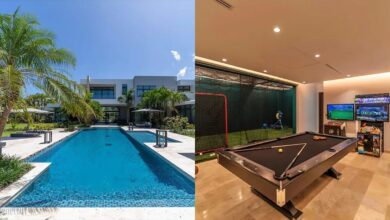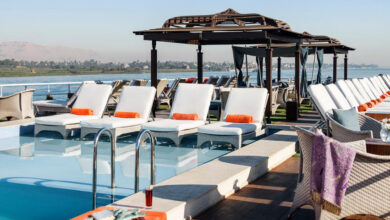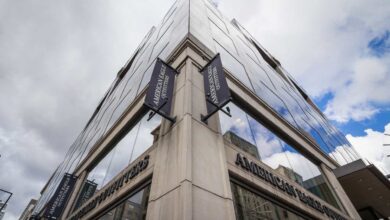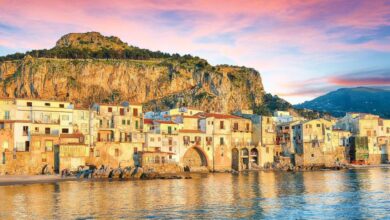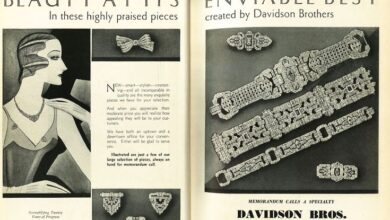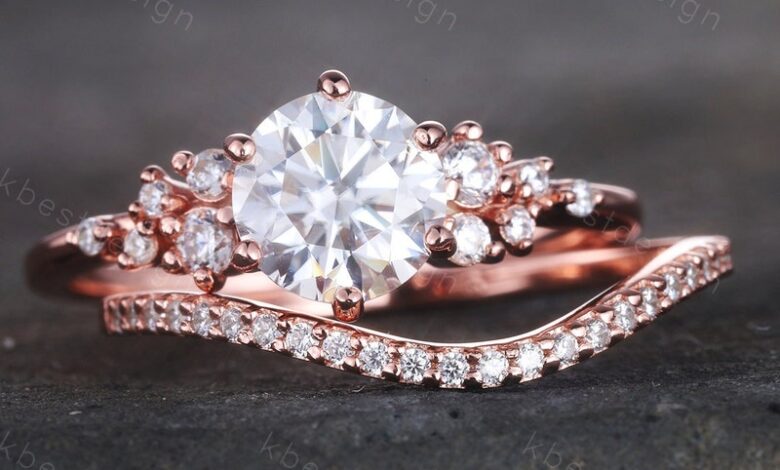
Art Deco All Over Again A Revival
Art Deco all over again is sweeping through design, architecture, and more. This isn’t just a trend; it’s a vibrant resurgence of geometric patterns, rich colors, and luxurious materials, reimagined for the modern era. We’re diving deep into the reasons behind this revival, exploring how contemporary designers are reinterpreting iconic Art Deco elements and blending them with current trends.
From fashion to furniture, we’ll see how this iconic style is resurfacing in surprising ways.
The allure of Art Deco’s timeless elegance is undeniable. Its sophisticated aesthetic, often associated with glamour and sophistication, has captivated designers and enthusiasts for decades. This revival isn’t just a stylistic choice; it’s a reflection of our current cultural moment, a desire to embrace a distinct era while adapting it to the present. It’s a compelling story of how enduring design principles can be reinterpreted for a new generation.
Defining the Art Deco Revival
The Art Deco style, a vibrant and influential design movement, emerged in the 1920s and 1930s. Its legacy continues to inspire contemporary design, particularly in recent years. This revival reflects a renewed appreciation for its distinctive aesthetic, characterized by bold geometric patterns, rich color palettes, and luxurious materials. This resurgence highlights the enduring appeal of Art Deco, a style that transcends its historical context.Art Deco’s appeal lies in its ability to seamlessly blend opulent materials with sleek geometric forms, creating a striking visual impact.
This combination of seemingly opposing elements—opulence and modernity—made it a defining style of the Jazz Age. Understanding its origins and evolution provides crucial insights into its contemporary relevance and enduring appeal.
Key Characteristics of Art Deco
Art Deco is instantly recognizable through its unique blend of geometric patterns, rich colors, and luxurious materials. This fusion of elements created a style that simultaneously celebrated the elegance of the past and the modernity of the future. The stylistic choices were deliberate, reflecting a desire to create a visually striking and sophisticated aesthetic.
- Geometric patterns are fundamental to the Art Deco aesthetic. These patterns, often featuring zigzags, chevrons, and stylized floral motifs, were meticulously incorporated into various design elements. Examples include furniture, textiles, and architecture. The use of these patterns was not arbitrary; they reflected the artistic and cultural trends of the era, particularly the influence of Cubism and other modernist movements.
- Rich color palettes are another defining characteristic. Art Deco embraced a wide spectrum of colors, from deep blues and emerald greens to fiery oranges and golds. These colors were often used in bold combinations, creating a striking visual impact. The use of rich colors often coincided with the use of luxurious materials like silk, leather, and precious metals.
- Luxurious materials were a hallmark of Art Deco design. The use of materials such as polished wood, glass, chrome, and precious metals like gold and platinum underscored the opulence and sophistication of the style. This use of high-quality materials was not merely decorative; it conveyed a sense of wealth and status, reflecting the prosperity of the era.
Historical Context of Art Deco
Art Deco emerged in the 1920s, coinciding with a period of significant social and cultural change. The aftermath of World War I, the rise of industrialization, and the burgeoning of new technologies profoundly influenced the artistic expressions of the time. Art Deco reflected this dynamism and optimism.
- The movement’s origins can be traced to the International Exhibition of Modern Decorative and Industrial Arts in Paris in 1925. This exhibition showcased the latest in design trends, solidifying Art Deco’s place as a significant artistic and cultural phenomenon. The exhibition provided a platform for designers and artists to present their work, which eventually became part of the movement.
- Art Deco’s cultural significance stemmed from its ability to capture the spirit of a particular era. The style reflected the optimism, dynamism, and technological advancements of the 1920s and 1930s. This connection to the cultural landscape of the time made it highly influential and relevant.
Comparison with Other Design Movements
Art Deco differed from other design movements of its time, such as the Arts and Crafts movement or the Bauhaus, by its unique emphasis on luxury and ornamentation. While other movements often emphasized simplicity and functionality, Art Deco embraced a more opulent and decorative aesthetic. The combination of these factors gave it a unique identity.
- Art Deco contrasted with the Arts and Crafts movement, which emphasized handcrafted objects and simple designs. Art Deco, in contrast, embraced mass production and industrial techniques, while incorporating elaborate details and patterns.
- Art Deco stood apart from the Bauhaus movement, which emphasized functionalism and geometric forms. Art Deco, while incorporating geometric shapes, was more concerned with decorative elements and luxurious materials.
Evolution of Art Deco
Art Deco’s evolution over time is evident in the stylistic choices made by designers and artists. The style adapted to changing cultural contexts, while maintaining its core characteristics. The influence of other artistic trends is discernible in the evolution of the style.
- Early Art Deco, often seen in the 1920s, showcased a strong emphasis on geometric patterns and streamlined forms. Later examples, extending into the 1930s, incorporated more elaborate decorative elements, suggesting a gradual evolution towards a more complex aesthetic.
Exploring the “All Over Again” Aspect
The Art Deco revival isn’t a mere trend; it’s a testament to the enduring appeal of a design aesthetic that seamlessly blends elegance, geometric precision, and a touch of glamour. This resurgence of interest reveals a deeper connection to the era’s spirit, and contemporary designers are not just replicating past styles but actively integrating them into the present. The reasons for this renewed fascination with Art Deco are multifaceted, encompassing cultural and economic influences.The contemporary reinterpretation of Art Deco elements is not a simple replication.
Art Deco’s back, in a big way, and it’s not just about fancy furniture. The sleek lines and bold colors are popping up everywhere, from fashion to interior design. This resurgence is mirrored in the innovative advertising strategies of early online travel agencies, like advertising and the pioneer otas , who used bold visuals and catchy slogans to capture the attention of travelers.
Ultimately, this echoes the Art Deco aesthetic, proving that timeless design always finds a way back into the spotlight.
Designers are skillfully adapting the aesthetic principles of the 1920s and 1930s to resonate with modern sensibilities. This involves updating the materials, techniques, and color palettes to create a fresh, contemporary look. The result is a design language that feels both familiar and innovative.
Reasons for the Art Deco Revival
The renewed interest in Art Deco stems from a desire for sophistication and a return to visually appealing design. The period’s emphasis on clean lines, bold geometric patterns, and luxurious materials aligns with a contemporary desire for refined aesthetics. Furthermore, the economic climate, particularly in the post-pandemic era, has influenced this revival. Consumers are seeking visually stimulating products and experiences, and Art Deco, with its inherent glamour, fits this need perfectly.
The historical context, in conjunction with the economic climate, creates a perfect storm for a design resurgence.
Contemporary Interpretations of Art Deco Elements
Contemporary designers are reimagining Art Deco’s signature elements to create unique modern expressions. They’re not merely replicating past styles; instead, they are updating the materials and techniques to give the style a contemporary feel. This involves exploring innovative materials, like sustainable alternatives and high-tech composites, while maintaining the clean lines and bold geometric shapes that define Art Deco.
Furthermore, they are experimenting with color palettes, incorporating more vibrant and unexpected hues to complement the modern design aesthetic.
Blending Art Deco with Current Trends
The blending of Art Deco with current trends is evident in various design fields. For instance, in interior design, designers are incorporating Art Deco motifs into furniture, lighting, and wall decor, but with a modern twist. They are often using bolder colors and textures to add a contemporary touch while preserving the signature geometric shapes and patterns. In fashion, designers are referencing Art Deco silhouettes, embellishments, and color schemes, incorporating them into contemporary clothing lines.
This fusion creates a harmonious combination of historical elegance and modern style.
Examples of Modern Blends
A modern interpretation of Art Deco might feature a sleek, geometric sofa with a bold, contrasting color scheme, accented with brass or copper hardware. A similar approach is applied to lighting fixtures, where elaborate geometric shapes are combined with modern LED technology. In home décor, Art Deco motifs might be subtly woven into wallpapers or textiles, adding a touch of elegance without being overly assertive.
This subtle incorporation of Art Deco elements is one of the primary methods of reintroducing the style into modern settings.
Motivations Behind the Revival
The revival of Art Deco is driven by a variety of factors, including a desire for luxury, a longing for refined aesthetics, and a renewed appreciation for historical design. The economic climate, in the post-pandemic era, has influenced this renewed interest. The enduring appeal of Art Deco’s timeless design principles, combined with the economic conditions, has contributed to this design renaissance.
Modern Interpretations of Art Deco
The Art Deco style, with its bold geometric patterns, luxurious materials, and streamlined forms, continues to captivate designers and enthusiasts today. Modern interpretations of Art Deco aren’t mere imitations; they’re a thoughtful reimagining of the original aesthetic, blending its iconic elements with contemporary sensibilities and materials. This evolution allows the spirit of Art Deco to resonate in fresh and exciting ways, adapting to the needs and preferences of the 21st century.Modern designers are not simply copying the past; instead, they are drawing inspiration from the core principles of Art Deco, including symmetry, precision, and sophisticated use of color and texture.
This allows for a dynamic reinterpretation of the style, creating designs that are both historically informed and contemporary in spirit.
Comparing Original Art Deco Furniture with Contemporary Interpretations
Art Deco furniture is characterized by its streamlined shapes, often featuring geometric patterns and strong lines. Original pieces often utilized luxurious materials like polished wood, chrome, and lacquer. Contemporary interpretations maintain the aesthetic but explore a wider range of materials, including sustainable woods, composite materials, and innovative finishes.
| Feature | Original Art Deco Furniture | Contemporary Interpretations |
|---|---|---|
| Materials | Polished wood, chrome, lacquer, glass | Sustainable woods, composite materials, metallic finishes, painted surfaces |
| Shapes | Geometric, streamlined, often with symmetrical elements | Geometric or asymmetrical shapes with clean lines, incorporating organic elements |
| Color Palette | Rich, jewel tones, often with black and gold accents | A broader spectrum of colors, including pastels, neutrals, and vibrant hues |
| Finish | High-gloss, polished surfaces | Matte finishes, textured surfaces, and combinations of finishes |
Examples of Art Deco Elements in Modern Architecture
Modern architects are incorporating Art Deco elements into contemporary structures in a variety of ways. The focus is on preserving the style’s key characteristics while adapting them to modern building practices and materials.
Art Deco is experiencing a fascinating resurgence, with sleek lines and bold patterns making a comeback in everything from fashion to home decor. This renewed interest is mirrored in the exciting new initiative from AmaWaterways, their first-ever black heritage cruise, which promises to highlight the rich history and culture of African Americans. The exploration of this often-overlooked history, as showcased in the AmaWaterways first black heritage cruise , is incredibly inspiring and, in a way, speaks to the broader Art Deco revival – both movements are about celebrating and reclaiming heritage, albeit in different contexts.
| Element | Modern Architectural Application |
|---|---|
| Geometric Forms | The use of sharp angles, zigzags, and stepped forms in building facades and interior spaces |
| Decorative Panels | Incorporating Art Deco-inspired panels in walls, ceilings, and stairwells using modern materials like concrete or glass |
| Streamlined Shapes | Using streamlined forms for window frames, door handles, and architectural details |
| Rich Colors | Employing rich jewel tones in building facades and interior spaces to complement the design |
Examples of Art Deco Motifs in Fashion, Textiles, and Accessories
Contemporary designers are reimagining Art Deco motifs in fashion, textiles, and accessories. These interpretations embrace the style’s elegant silhouettes and geometric patterns.
| Application | Example |
|---|---|
| Fashion | Geometric prints on dresses, skirts, and jackets; use of bold colors and geometric shapes in jewelry and accessories |
| Textiles | Use of repeating geometric patterns on upholstery fabrics, curtains, and wall coverings; incorporation of Art Deco color palettes in textile design |
| Accessories | Geometric shapes in jewelry designs; incorporating Art Deco motifs into handbags, shoes, and scarves |
Art Deco Style in Interior Design with Modern Materials
Contemporary interior designers are embracing the spirit of Art Deco while utilizing modern materials. This allows for a seamless blend of historical style with modern functionality.Interior design examples showcasing Art Deco with modern materials include: using polished concrete floors, incorporating metallic accents in furniture legs and lighting fixtures, employing patterned wallpapers with bold geometric designs, and adding pops of vibrant color to create a sense of luxury.
Art Deco Patterns in Graphic Design and Illustrations
Art Deco’s distinctive geometric patterns and use of bold colors are also inspiring contemporary graphic designers and illustrators. Modern applications involve incorporating these elements into logos, posters, and illustrations.Contemporary examples of graphic design and illustration influenced by Art Deco include using stylized geometric patterns as background elements, employing strong lines and shapes in logo designs, and incorporating bold colors and contrasting palettes for visual impact.
Art Deco in Various Industries

The Art Deco revival isn’t just a stylistic rehash; it’s a dynamic reimagining of a design language that continues to resonate with modern sensibilities. This period, characterized by sleek lines, geometric patterns, and glamorous aesthetics, is finding new life in diverse industries, breathing fresh energy into familiar forms and concepts. Its influence transcends mere imitation, sparking innovative approaches in fields from fashion to film.The Art Deco revival’s impact isn’t confined to a single medium.
From the glamorous silhouettes of haute couture to the streamlined elegance of automobiles, the style’s influence is pervasive. Modern interpretations, while respecting the original aesthetic, incorporate contemporary materials and technologies, ensuring its enduring relevance in a constantly evolving world.
Art Deco in Fashion
The Art Deco revival in fashion emphasizes streamlined silhouettes and luxurious fabrics. Bold geometric patterns, often incorporating vibrant colours, are a defining characteristic. The focus is on creating garments that are both elegant and functional, echoing the spirit of the original era while incorporating modern comfort. Designers often draw inspiration from the iconic flapper dresses and tailored suits of the 1920s, updating them with contemporary materials and techniques.
For example, a contemporary designer might incorporate Art Deco-inspired embellishments, such as beaded geometric patterns, onto a modern jumpsuit or incorporate the sharp lines of the era into a tailored blazer.
Art Deco in Automotive Design
The Art Deco influence in automotive design is evident in the sleek lines and geometric shapes that define many modern vehicles. The revival sees a reinterpretation of the streamlined aesthetics of the 1930s, incorporating modern engineering and technology into the design. Examples include the use of chrome accents and sculpted fenders that echo the classic Art Deco forms.
Furthermore, the emphasis on aerodynamic efficiency and sleek silhouettes is another significant aspect of this influence. The style’s impact is evident in the use of chrome accents, bold grille designs, and the integration of geometric patterns into the vehicle’s overall design.
Art Deco in Jewelry Design, Art deco all over again
Modern jewelry design is increasingly incorporating Art Deco motifs. The use of geometric shapes, such as trapezoids, diamonds, and circles, creates striking pieces. Materials like precious metals and gemstones are frequently combined with modern techniques to create contemporary designs that maintain the essence of Art Deco. Furthermore, the use of bold, contrasting colours and intricate patterns adds to the appeal of these contemporary pieces.
This approach allows for a reinterpretation of classic styles, with the addition of modern touches and a focus on luxury and craftsmanship. For instance, a modern designer might incorporate geometric patterns in a bracelet or necklace design using platinum and colored gemstones.
Art Deco is experiencing a major resurgence, with sleek lines and bold colours popping up everywhere. It’s like the style is having a moment, and with adventuresmith announcing a Hawaii cruise offering, it’s the perfect opportunity to embrace this vintage vibe while exploring paradise. This bold new cruise promises a luxurious journey, which perfectly matches the glamour of the Art Deco aesthetic.
The elegant style is definitely back, and this travel opportunity will make it even more exciting.
Art Deco in Product Design
The Art Deco style is being incorporated into a wide range of product designs. Modern designers are borrowing the streamlined aesthetics and geometric shapes to create contemporary furniture, homeware, and accessories. The influence can be seen in the clean lines of lamps, the geometric patterns of tableware, and the sculpted forms of decorative objects. This integration creates a sense of timeless elegance, incorporating the enduring appeal of the style into modern living spaces.
Art Deco in Cinematography
The Art Deco revival has had a noticeable impact on modern cinematography. Filmmakers often employ stylistic elements of the era, including the use of vibrant colours, geometric patterns, and dramatic lighting. This is used to create a visually striking aesthetic that evokes the glamour and sophistication of the 1920s and 1930s. This is evident in the use of lighting to create strong contrasts, as well as the careful composition of scenes to reflect the style’s geometric elements.
This creates a specific visual language, drawing inspiration from the visual style of the period. A contemporary film might use Art Deco-inspired colour palettes and set design to create a distinctive and captivating visual narrative.
Social and Cultural Implications
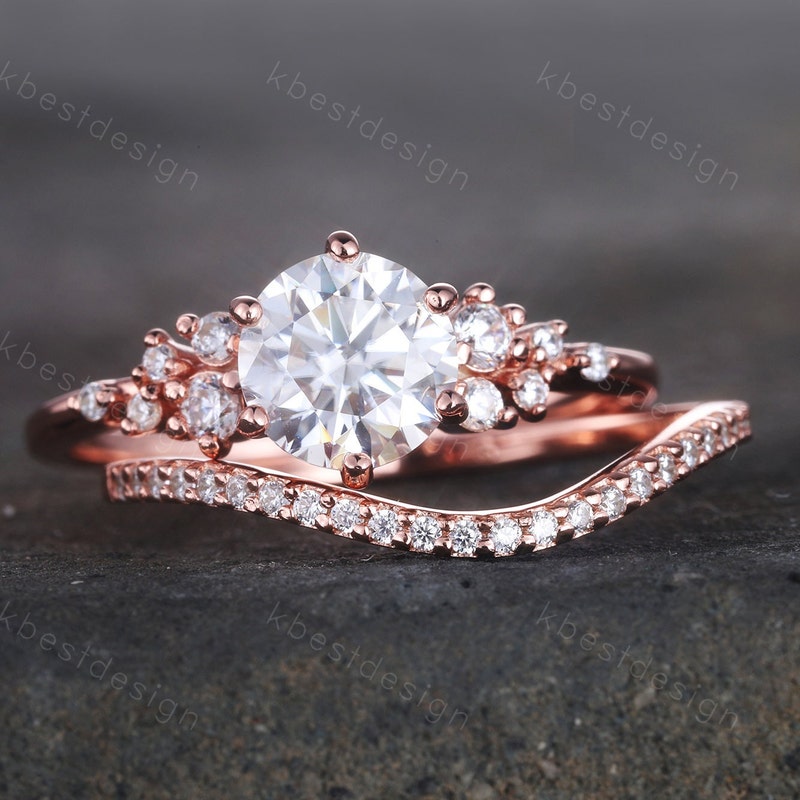
The Art Deco revival isn’t just a design trend; it’s a reflection of our current social and cultural landscape. This resurgence speaks volumes about our collective desire for a particular aesthetic, a longing for a specific era, and a re-evaluation of design principles that have stood the test of time. The style’s re-emergence isn’t a simple echo of the past but a dialogue between historical influences and contemporary sensibilities.The Art Deco style, born from the roaring twenties, embodied a sense of optimism, technological advancement, and a celebration of modern life.
Its geometric patterns, bold colors, and luxurious materials reflected a society embracing progress and sophistication. The current revival is a complex interaction with that past, often interpreted through a modern lens, incorporating diverse perspectives and experiences.
Factors Contributing to the Current Interest
The renewed interest in Art Deco stems from several interconnected factors. The desire for unique and distinct design, a reaction against over-saturation in contemporary styles, and a yearning for a sophisticated yet functional aesthetic all play a role. Additionally, the accessibility of historical resources and inspiration fuels the revival, allowing designers and consumers alike to tap into a rich repository of design principles.
Furthermore, the rise of social media platforms and online communities has amplified the spread of Art Deco designs and ideas, making them more accessible to a wider audience.
Reflection of Societal Values and Aesthetics
Art Deco’s geometric forms, streamlined shapes, and emphasis on symmetry reflect a desire for order and clarity in a complex world. This resonates with the current emphasis on minimalism and functional design. Furthermore, the style’s bold colors and luxurious materials often express a desire for elegance and sophistication, appealing to a demographic valuing refined aesthetics. The modern interpretation of Art Deco frequently incorporates sustainability and eco-conscious materials, showing a societal shift towards environmentally responsible choices.
Impact on Consumer Culture
The Art Deco revival is impacting consumer culture in several ways. Demand for furniture, accessories, and home décor inspired by the style is rising, stimulating production and sales of related products. This revival is also leading to a renewed interest in vintage and antique Art Deco pieces, boosting the secondary market for these items. The integration of Art Deco elements into modern products is further expanding the style’s influence, creating a fusion of classic and contemporary design.
Cultural Perceptions of Art Deco
The perception of Art Deco varies across cultures. In some cultures, it might be associated with wealth and status, echoing the original era’s connotations. In others, the style might be viewed as a symbol of modernity and progress, reflecting a broader appreciation for design principles. Ultimately, the interpretation of Art Deco often depends on the cultural context and historical understanding of the audience.
Furthermore, the adaptation of Art Deco to local contexts within different cultures is increasingly common.
Comparison of Original and Current Context
The original Art Deco era was characterized by a specific historical context, including the post-World War I optimism and the rise of industrialization. Today, the Art Deco revival occurs in a different cultural environment marked by globalization, technological advancements, and a heightened awareness of sustainability. This difference in context influences the way the style is interpreted and applied.
The original Art Deco represented an era of significant progress, while the current revival signifies a blend of that progress with contemporary concerns.
Visual Representations
The Art Deco revival isn’t just about recreating past styles; it’s about reimagining them through a contemporary lens. Visual representations play a crucial role in this process, offering tangible expressions of the aesthetic and inspiring a deeper understanding of the era’s spirit. From architectural marvels to exquisite jewelry, Art Deco’s visual vocabulary continues to captivate and inspire.
Art Deco-Inspired Building
The Chrysler Building, a towering example of Art Deco architecture, epitomizes the style’s elegance and dynamism. Its streamlined facade, featuring intricate ornamentation, geometric patterns, and chrome accents, is a testament to the era’s fascination with modernism and industrial design. The building’s verticality and use of stainless steel and glass exemplify the period’s ambition to create striking and technologically advanced structures.
Art Deco is definitely making a comeback, and it’s inspiring. Seeing dozens of graduates honored at a transformational leadership ceremony like this one reminds me of the elegance and forward-thinking spirit of the original Art Deco era. The bold geometric patterns and luxurious materials seem to be echoing in today’s design, and I’m excited to see where this Art Deco resurgence takes us.
Its sculpted details and decorative friezes add a touch of sophisticated grandeur.
Art Deco-Inspired Jewelry
A striking Art Deco-inspired necklace might feature a stylized geometric design, possibly incorporating bold lines and angles. The use of precious stones, like emeralds, sapphires, and diamonds, is likely, arranged in a pattern that echoes the clean lines and symmetrical forms characteristic of the period. The materials themselves often evoke the style’s connection to luxury and craftsmanship. The cultural significance of such a piece lies in its ability to capture the opulence and sophistication of the roaring twenties, and it would likely showcase the precision and skill of the modern artisans who created it.
Materials such as platinum, gold, and enamel would likely be combined in a manner that conveys the essence of the style.
Art Deco-Inspired Fashion Garment
A contemporary Art Deco-inspired gown might feature a flowing, streamlined silhouette, emphasizing the female form with subtle, sculpted lines. The fabric choices would likely include luxurious materials like silk, satin, or velvet. The gown’s design might incorporate a geometric pattern or a bold, graphic print, reminiscent of the style’s emphasis on bold shapes and symmetrical designs. The garment’s historical connection is evident in its embrace of streamlined silhouettes, a departure from the more voluminous styles of the preceding era.
Art Deco is making a comeback, and I’m loving the sleek lines and bold colours. But with all those fancy new packaging options, staying on top of your office packaging shipping supplies costs here is crucial. It’s all about that balance of chic aesthetics and savvy budgeting, just like the Art Deco era. I’m already envisioning my new office space in a sophisticated Art Deco style!
The contemporary element would likely be a modern take on the fabric choices or a unique interpretation of the Art Deco aesthetic, appealing to a modern fashion sense.
Symbolism in Art Deco Motifs
Art Deco motifs often carry symbolic weight, reflecting the era’s values and aspirations. Geometric patterns, such as zigzags, chevrons, and stylized floral designs, were frequently used, representing order, progress, and the new technological age. The use of stylized sunbursts or radiating designs can be interpreted as a representation of the optimistic spirit of the era, and the rise of the modern city.
These motifs are not merely decorative elements; they serve as visual representations of a particular mindset and cultural context.
Illustrative Approaches to Art Deco-Inspired Artwork
Several approaches can be employed to illustrate an Art Deco-inspired artwork. A painter might use bold colors and strong lines to evoke the style’s dynamism and geometric precision. The artwork could also emphasize the use of light and shadow to create a sense of depth and drama, characteristic of the era’s emphasis on luxurious materials. Graphic designers might utilize a combination of typography and bold geometric shapes to express the spirit of the style, drawing inspiration from the era’s posters and advertising materials.
Photography could capture the sleek lines and luxurious textures, often seen in Art Deco architecture and design.
Applications and Examples
The Art Deco aesthetic, with its sleek lines, geometric patterns, and vibrant colors, transcends mere style. Its influence is deeply embedded in various facets of modern design, from advertising and branding to interior décor and product packaging. This section explores how Art Deco principles continue to resonate with contemporary sensibilities.
Art Deco in Advertising and Branding
Art Deco’s strong visual language, characterized by bold typography, stylized imagery, and a sense of glamour, makes it a powerful tool in advertising and branding. Companies often leverage these elements to convey sophistication, luxury, and a sense of modernity. For example, the use of geometric shapes and contrasting colors in advertising campaigns creates a memorable visual impact, effectively communicating a brand’s message.
Modern Brands Adopting Art Deco Elements
Several contemporary brands have successfully incorporated Art Deco design elements into their visual identity. These brands often aim to evoke a sense of timeless elegance and sophistication. For instance, some luxury fashion houses and high-end jewelry brands utilize Art Deco motifs in their logos and marketing materials.
Art Deco in Graphic Design
The principles of Art Deco, such as asymmetry, vibrant colors, and strong geometric forms, find application in various graphic design elements. Typography is a key aspect; bold, sans-serif fonts with stylized serifs are frequently used. These elements contribute to a visually arresting and memorable presentation. Furthermore, the use of contrasting colors, often in a monochromatic or limited palette, adds to the aesthetic appeal.
Art Deco in Interior Design
Art Deco’s influence extends to interior design, where it creates a sophisticated and luxurious ambiance. Geometric patterns, often in bold colors, adorn walls and textiles. This approach adds depth and dynamism to the interior. The incorporation of decorative elements, such as sculpted furniture or metallic accents, further enhances the Art Deco aesthetic. Intricate patterns in wallpapers, rugs, and upholstery add texture and visual interest to the space.
Art Deco in Product Packaging
The use of Art Deco principles in product packaging creates a visually striking presentation that suggests quality and exclusivity. Geometric shapes and stylized imagery are frequently employed. Furthermore, the use of metallic finishes or high-gloss materials reinforces the luxurious feel. The combination of vibrant colors, bold typography, and unique design elements effectively draws the consumer’s eye.
Final Review: Art Deco All Over Again
In conclusion, the Art Deco revival isn’t just a fleeting trend; it’s a powerful statement about design’s ability to transcend time. By examining the reasons behind its resurgence and the modern interpretations, we gain a deeper appreciation for the enduring appeal of Art Deco. This style, once considered a relic of the past, now vibrantly intertwines with contemporary aesthetics, demonstrating the cyclical nature of design and its ability to adapt to evolving tastes.
The enduring influence of Art Deco is evident in its seamless integration into various industries, a testament to its enduring appeal.
Quick FAQs
What are some key characteristics of the original Art Deco style?
Art Deco is known for its geometric shapes, bold colors, and luxurious materials like chrome and lacquer. It often incorporated rich textures and intricate patterns.
How does the current Art Deco revival differ from the original era?
While embracing the key elements, modern interpretations often blend Art Deco with contemporary materials and aesthetics. The focus might be on minimalism or sustainability, but the core elements remain recognizable.
What are some examples of where we see Art Deco today?
Art Deco is popping up in everything from fashion and jewelry to architecture and product design, highlighting its versatility and appeal.
Why is there so much interest in Art Deco now?
The resurgence is driven by a desire for classic elegance, the desire for unique design, and a growing appreciation for the era’s aesthetic appeal.

